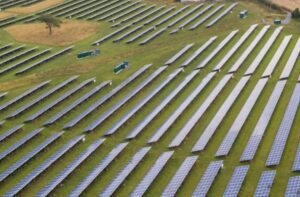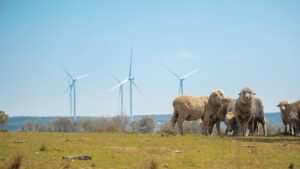The Asia-Pacific region’s largest renewables developer, and the company behind one of Australia’s biggest planned solar projects, has sold its $5 billion portfolio of projects to a consortium of high powered global investors in a deal that is being described as the largest ever purchase of renewable energy generation assets.
Singapore-based Equis Energy – which in August announced plans to build a massive 1,000MW solar farm in the heart of Queensland’s coal and gas region in the Surat Basin – said on Wednesday that Global Infrastructure Partners (GIP) and others had agreed to buy its wind and solar portfolio for around $A5 billion.
The companies said on Wednesday that the landmark deal would position GIP – along with Canada’s biggest pension fund and the sovereign wealth fund China Investment Corp – as a dominant renewable energy developer in the key OECD growth markets of Australia and Japan, as well as across India and South-East Asia.
In a statement on Wednesday, GIP described Equis – which was founded just five years ago – as a “unique success story,” which had developed a portfolio of 1.9GW of operational, construction and shovel-ready solar PV and onshore wind assets.
Equis also owns a promising long-term development pipeline comprised of over 115 projects representing 9.1 GW across Australia, Japan, India, Indonesia, the Philippines and Thailand.
In Australia, the company announced in February the construction of two battery-ready 100MW-plus solar plants – the 127MW Taliem Bend project in South Australia, and the 150MW Collinsville north solar farm in Queensland – but stressed that these were just the tip of the iceberg of its plans Down Under.
Since then, it has revealed plans for the $1.5 billion, 1GW Wandoan solar farm, to be built near the Queensland town of the same name.
David Russell, who is CEO of Equis and chairman of Equis Energy described the acquisition as exciting news for renewable energy in the Asia‐Pacific region, and RenewEconomy agrees.
The sheer size of the deal – and the heft of the group of international investors behind it – shows that the business of utility-scale renewable energy generation has well and truly arrived at the “big end of town,” even if Australia’s policy-makers aren’t ready to to join the welcome party.
The buzz around wind and solar in global energy markets has been further illustrated by reports on the initial public offering of renewables investment fund New Energy Solar, which is being led by analyst group Morgan Stanley.
As the AFR reported on Tuesday, Morgan Stanley “is asking fund managers to sink their teeth into solar energy,” in its pre-marketing for the expected $200 million IPO for New Energy Solar, which invests in large-scale, cashflow-producing solar power stations, striking 20-year PPAs with customers.
In a report titled “Rare exposure to clean energy, Morgan Stanley utilities analyst Rob Koh told clients New Energy Solar was targeting renewables investments in the US, Australia and other select markets. He says the fund already owns four contracted solar projects in the US and has committed to buy another 14.
“We believe economics and policy are directionally favourable to NES’ prospects for further deployment of capital,” he told clients.
As for the Equis Energy deal, GIP sees it as a “strong fit” with its own global renewables investment strategy.
“Equis Energy is a unique success story in the APAC region as it has systematically executed its growth strategy since its founding 5 years ago,” said GIP chairman and managing partner, Adebayo Ogunlesi.
“In that period, Equis Energy has become one of the leading renewable energy platforms in the region, with a best‐in‐class business model, a high‐quality asset portfolio and an outstanding management team. We look forward to continuing the … success story in the years to come and to supporting new growth opportunihttps://reneweconomy.wpengine.com/wp-admin/profile.phpties in one of the most promising renewable energy markets in the world.”
The deal remains subject to customary regulatory closing conditions, and is expected to close in the first quarter of 2018.









